| The Social Insect Lab |
 |
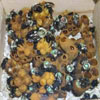
people |
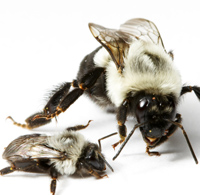
projects |
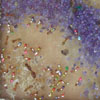
publications |

teaching |
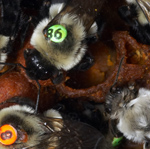
in the news |

Uni of AZ |

EEB |
Publications
|
submitted or in revision Goldsby HJ, Dornhaus A, Kerr B, Ofria C ‘Division of Labor Evolves in Digital Organisms’, submitted Jandt J, Bengston S, Pinter-Wolman N, Pruitt J, Raine N, Dornhaus A, Sih A 'Behavioral syndromes and social insects: personality at multiple levels', submitted Bengston SE, Dornhaus A ‘Standard scaling models are not useful predictors of foraging distance in the ant Temnothorax rugatulus’, in revision Dornhaus A, Walton A, ‘Does learning increase or decrease innate behavioral variation? The role of experience in division of labor of the ant Temnothorax albipennis’, in revision Dornhaus A, Holt G, Prather D, Zhu Y ‘Ants care about their environment: choice of suitable microhabitat by emigrating colonies of Temnothorax rugatulus’, in revision Dunlap AS, Ke W, Dornhaus A ‘Information flow within bumble bee nests: honey pots receive nectar from different food sources’, in revision Cao TT, Enquist BJ, Pavao-Zuckerman M, Dornhaus A ‘Allometric scaling of metabolic rate in a superorganism’, in revision Jandt JM, Dornhaus A ‘Bumble bee body size and response thresholds: the amount of variation among workers may affect colony performance’, in revision Lanan M, Dornhaus A, Jones EI, Waser A, Bronstein JL ‘Contrasting models of ant colony foraging behavior: individual decision-making and symmetry breaking’, in revision Schmolke A, Dornhaus A ‘Ants foraging for food: individual strategies in solitary and group foragers’, in revision Schmolke A, Miguelena-Bada J, Dornhaus A ‘Search and foraging strategies in the ant Temnothorax rugatulus’, in revision Schmolke A, Pratt C, Dornhaus A ‘Polydomous colonies divide up foraging areas’, in revision Leonard AS, Brent J, Papaj D, Dornhaus A ‘Floral patterns as an adaptation to deter nectar robbing’, in revision Pinter-Wollman N, Hubler J, Holley J-A, Franks NR, Dornhaus A ‘How is activity distributed among and within tasks in 1 Temnothorax ants?’, in revision Powell S, Dornhaus A ‘Soldier-based defenses dynamically track resource availability and quality in ants’, submitted 2012 Blonder B, Wey TW, Dornhaus A, James R, Sih A ‘Temporal dynamics and network analysis’, Methods in Ecology and Evolution in press Dornhaus A, Powell S, Bengston S 2012 ‘Group size and its effects on collective organization’, Annual Review of Entomology 57: 123-141. @Annual Reviews Donaldson-Matasci MC, Dornhaus A 2012 ‘How habitat affects the benefits of communication in collectively foraging honey bees’, Behavioral Ecology and Sociobiology 66: 583-592 @Springer Jandt JM, Robins NS, Moore RE, Dornhaus A 2012 ‘Individual bumblebees vary in response to disturbance: a test of the defensive reserve hypothesis’, Insectes sociaux published ‘online first’@Springer Kaczorowski RL, Leonard AS, Dornhaus A, Papaj D 2012 ‘Floral signal complexity as a possible adaptation to environmental variability: a test using nectar foraging bumble bees’, Animal Behaviour 83: 905-913 @ScienceDirect Dornhaus A 2012 ‘Finding optimal collective strategies using individual-based simulations: colony organization in social insects’, Mathematical and Computer Modelling of Dynamical Systems 18: 25-37 @Taylor&Francis Cao TT, Dornhaus A 2012 ‘Ants use pheromone markings in emigrations to move closer to food-rich areas’, Insectes sociaux 59: 87-92 @Springer Duong N, Dornhaus A 2012 ‘Ventilation response thresholds do not change with age or self-reinforcement in workers of the bumble bee Bombus impatiens’, Insectes sociaux 59: 25-32 @Springer 2011 Blonder B, Dornhaus A 2011 'Time-ordered networks reveal limitations to information flow in ant colonies', PLoS One 6: e20298 @ PLoS Couvillon MJ, Jandt J, Bonds J, Helm BR, Dornhaus A 2011 ‘Percent lipid is associated with body size but not task in the bumble bee Bombus impatiens’, Journal of Comparative Physiology A 197: 1097-1104. @Springer Jandt JM, Dornhaus A 2011 ‘Competition and cooperation: bumblebee spatial organization and division of labor may affect worker reproduction late in life’, Behavioral Ecology and Sociobiology 65: 2341-2349. @Springer Jones EI, Dornhaus A 2011 'Predation risk makes bees reject rewarding flowers and reduce foraging activity', Behavioral Ecology and Sociobiology 65: 1505-1511 @ Springer Lanan MC, Dornhaus A, Bronstein J 2011 'The function of polydomy: the ant Crematogaster torosa preferentially forms new nests near food sources and fortifies outstations', Behavioral Ecology and Sociobiology 65: 959-968 @ Springer Leonard AS, Dornhaus A, Papaj DR 2011 ‘Forget-me-not: complex floral signals, inter-signal interactions and pollinator cognition’ Current Zoology 57: 215-224 @ Current Zool (invited contribution to special issue on complex signaling) Leonard AS, Dornhaus A, Papaj DR 2011 ‘Why are floral signals complex? An outline of functional hypotheses’, in: Evolution of Plant-Pollinator Relationships. Patiny, S. (ed.) Cambridge University Press Leonard AS, Dornhaus A, Papaj DR 2011 ‘Flowers help bees cope with uncertainty: signal detection and the function of complex floral signals’, Journal of Experimental Biology 214: 113-121 @ Biologists Marshall JAR, Bogacz R, Planqué R, Dornhaus A, Kovacs T, Franks NR 2011 ‘On optimal decision making in brains and social insect colonies’, in: Seth et al. (eds.) Modelling Natural Action Selection. Cambridge University Press (invited book chapter) 2010 Ferguson HM, Dornhaus A, Beeche A, Borgemeister C, Gottlieb M, Mulla MS, Gimnig JE, Fish D, Killeen GF 2010 ‘Ecology: a prerequisite for Malaria elimination and eradication’, PLoS Medicine 7: e1000303 @ PLoS Couvillon MJ, Dornhaus A 2010 ‘Small worker bumble bees (Bombus impatiens) are hardier against starvation than their larger sisters', Insectes sociaux 57: 193-197 @ Springer Couvillon MJ, Jandt J, Duong N, Dornhaus A 2010 ‘Ontogeny of worker body size distribution in bumblebee (Bombus impatiens) colonies’, Ecological Entomology 35: 424–435 @ Wiley Couvillon MJ, Fitzpatrick G, Dornhaus A 2010 'Ambient air temperature does not predict whether small or large workers forage in bumble bees (Bombus impatiens)', Psyche 2010 @ Psyche Dornhaus A, Powell S 2010 ‘Foraging and defence strategies’ In: ‘Ant Ecology’, Eds. L Lach, C Parr, K Abbott, Ant Ecology, Oxford University Press @ google books 2009 Jandt, JM, Huang, E, Dornhaus, A 2009 'Weak specialization of workers inside a bumble bee nest', Behavioral Ecology and Sociobiology 63: 1829-1836 @ Springer Dornhaus A, Holley J-A, Franks N 2009 ‘Larger colonies do not have more specialized workers in the ant Temnothorax albipennis’, Behavioral Ecology 20: 922-929 @ Behav Ecol Couvillon MJ, Dornhaus A 2009 ‘Location, location, location: larvae position inside the nest is correlated with adult body size in worker bumble bees (Bombus impatiens)’, Proceedings of the Royal Society: Biological Sciences 276: 2411-2418 @ Roy Soc Jandt J, Dornhaus A 2009 ‘Spatial organization and division of labor in the bumble bee, Bombus impatiens’ Animal Behaviour 77: 641-651 @ Science Direct Marshall JAR, Bogacz R, Dornhaus A, Planque R, Kovacs T, Franks NR, 2009 ‘On optimal decision-making in brains and social insect colonies’ Journal of The Royal Society Interface 6: 1065-1074@ Roy Soc Franks NR, Dornhaus A, Marshall JAR, Deuchaume-Moncharmont F-X, 2009. ‘The dawn of a golden age in mathematical insect sociobiology’. In: Eds. J. Fewell & J. Gadau, Organization of Insect Sociteties, Harvard University Press @google books 2008 Dornhaus A 2008 ‘Specialization does not predict individual efficiency in an ant’ PLoS Biology 6: e285 @ PLoS Cao T, Dornhaus A 2008 'Ants under crowded conditions consume more energy' Biology Letters 23: 613-615 @ Biol Lett Dornhaus A, Franks NR 2008 'Individual and collective cognition in ants and other insects (Hymenoptera: Formicidae)' Myrmecol News 11: 215-226 @ Myrmecol News Dornhaus A, Holley J-A, Pook VG, Worswick G, Franks NR 2008 'Why do not all workers work? Colony size and workload during emigrations in the ant Temnothorax albipennis' Behavioral Ecology and Sociobiology 63: 43-51 @ Springer Huang MH, Dornhaus A 2008 ‘Are ant social parasites always closely related to their hosts? Host characteristics in different parasitism types and a test of Emery’s rule’ Ecological Entomology 33: 589-596 @ Ecol Entom Kulahci IG, Dornhaus A, Papaj D 2008 ‘Multimodal signals enhance decision-making in bumblebees’ Proceedings of the Royal Society: Biological Sciences 275: 797-802 @ Roy Soc 2007 Franks NR, Hooper JW, Gumn M, Bridger TH, Marshall JAR, Groß R, Dornhaus A 2007 'Moving targets: collective decisions and flexible choices in house-hunting ants' Swarm Intelligence 1: 81-94 @ Springer Franks NR, Hooper JW, Dornhaus A, Aukett PJ, Hayward AL, Berghoff S 2007 'Reconnaissance and latent learning in ants' Proceedings of the Royal Society: Biological Sciences 274: 1505-1509 @Roy Soc Franks NR, Dornhaus A, Hitchcock G, Guillem R, Hooper J, Webb C 2007 'Avoidance of conspecific colonies during nest choice by ants' Animal Behaviour 73: 525-534 @ScienceDirect Planque R, Dornhaus A, Franks NR, Kovacs T, Marshall JAR 2007 'Weighting waiting in collective decision-making' Behavioral Ecology and Sociobiology 61: 347-356 @Springer Thom C, Dornhaus A 2007 'Preliminary report on the use of volatile compounds by foraging honey bees in the hive (Hymenoptera: Apidae: Apis)' Entomologia generalis 29: 299-304 @Entgen 2006 Dornhaus A, Franks NR 2006 'Colony size affects collecive decision-making in the ant Temnothorax albipennis' Insectes sociaux 53: 420-427 @Springer Dornhaus A, Collins EJ, Dechaume-Moncharmont F-X, Houston A, Franks NR, McNamara J 2006 'Paying for information: partial loads in central place foragers' Behavioral Ecology and Sociobiology 61: 151-161 @Springer Dornhaus A, Klügl F, Oechslein C, Puppe F, Chittka L 2006 'Benefits of recruitment in honey bees: effects of ecology and colony size in an individual-based model' Behavioral Ecology 17: 336-344 pdf @BehEcol Marshall, J. A. R., Dornhaus, A., Franks, N. R., Kovacs, T., 2006, “Noise, cost and speed-accuracy trade-offs: decision making in decentralised systems”, Journal of The Royal Society Interface 3: 243-254 @Roy Soc Franks, N. R., Dornhaus, A., Best, C. S., Jones, E. L., 2006, “Decision-making by small and large house-hunting ant colonies: one size fits all”, Animal Behaviour 72: 611-616 @ScienceDirect Raine, N. E., Ings, T. C., Dornhaus, A., Saleh, N., Chittka, L., 2006, “Adaptation, genetic drift, pleiotropy, and history in the evolution of bee foraging behavior”, Advances in the Study of Behavior 36: 305-354 pdf Franks, N. R., Dornhaus, A., Metherell, B. G., Nelson, T. R., Lanfear, S. A. J., Symes, W., 2006, “Not everything that counts can be counted: Ants use multiple metrics for a single nest trait.”, Proceedings of the Royal Society: Biological Sciences 273: 165-169 @Roy Soc 2005 Granero, A. M., Guerra Sanz, J. M., Ega Gonzalez, F. J., Martinez Vidal, J. L., Dornhaus, A., Ghani, J., Serrano, A. R., Chittka, L., 2005, “Chemical compounds of the foraging recruitment pheromone in bumblebees”, Naturwissenschaften 92: 371-374 @Springer Dechaume-Moncharmont, F.-X., Dornhaus, A., Houston, A. I., McNamara, J. M., Collins, E. J., Franks, N. R., 2005, “The hidden cost of information in collective foraging”, Proceedings of the Royal Society: Biological Sciences 272: 1689-1695 @Roy Soc Dornhaus, A., Chittka, L., 2005, “Bumble bees (Bombus terrestris) store both food and information in honeypots”, Behavioral Ecology 16: 661-666 pdf @BehEcol Franks, N. R., Hooper, J., Webb, C., Dornhaus, A., 2005, “Tomb evaders: house-hunting hygiene in ants”, Biology Letters 1: 190-192 @Roy Soc 2004 Dornhaus, A., Chittka, L., 2004, “Information flow and regulation of foraging activity in bumble bees”, Apidologie 35: 183-192 pdf @EDP Sciences Dornhaus, A., Chittka, L., 2004, “Why do honey bees dance?”, Behavioral Ecology and Sociobiology 55: 395-401 @Springer Dornhaus, A., Franks, N.R., Hawkins, R.M., Shere, H.N.S., 2004, “Ants move to improve – colonies of Leptothorax albipennis emigrate whenever they find a superior nest site”, Animal Behaviour 67: 959-963 @ScienceDirect 2003 Franks, N.R., Dornhaus, A., Fitzsimmons, J.P., Stevens, M., 2003, “Speed vs. Accuracy in Collective Decision-Making”, Proceedings of the Royal Society: Biological Sciences 270: 2457-2463 @Roy Soc Marshall JAR, Kovacs T, Dornhaus AR, et al., 2003, “Simulating the evolution of ant behaviour in evaluating nest sites”, Lecture Notes in Artificial Intelligence 2801: 643-650 2003 pdf @Univ of Bristol Chittka, L., Dyer, A., Bock, F., Dornhaus, A., 2003, “Bees trade off foraging speed for accuracy”, Nature 424: 388 @Nature Franks, N.R., Dornhaus, A., 2003, “How might individual honeybees measure massive volumes?”, Proceedings B: Biology Letters 270 (Supplement 2): 181-182 @Roy Soc Dornhaus, A., Brockmann, A., Chittka, L., 2003, “Bumble bees alert to food with pheromone from tergal gland”, Journal of Comparative Physiology A 189: 47-51 @Springer Dornhaus, A., Cameron, S., 2003, “A scientific note on food alert in Bombus transversalis”, Apidologie 34: 87-88 pdf @EDP Sciences 2002 Dornhaus, A., 2002, “When do dances make a difference? Significance of honey bee recruitment depending on foraging distance”, Entomologia Generalis 26: 93-100@Entgen 2001 Dornhaus, A., Chittka, L., 2001, “Food alert in bumblebees (Bombus terrestris): possible mechanisms and evolutionary implications”, Behavioral Ecology and Sociobiology 50: 570-576 @Springer 1999 Dornhaus, A., Chittka, L., 1999, “Evolutionary origins of bee dances”, Nature 401: 38 @Nature Chittka, L., Dornhaus, A., 1999, “Comparisons in physiology and evolution, and why bees can do the things they do”, Ciencia al Dia International 2: No. 2, ISSN 0717-3849 article Conference contributions 2011 2010 Dornhaus A, Foitzik S 2010, ‘Behavioral syndromes in social insects: the evolution of behavioral variation between individuals and colonies’ IUSSI Copenhagen, Denmark [organized symposium] Dornhaus A 2010, ‘The purpose of variation in groups - efficiency, robustness, and division of labor’, WABC (Winter Animal Behavior Conference), Steamboat, Colorado [invited conference talk] Dornhaus A 2010, ‘Individual and collective organizational strategies in social insects’, Social Biomimicy Conference, ASU, Tempe, AZ [invited talk] Dunlap AS, Papaj DR, Dornhaus A 2010, ‘Tracking variable environments: effects of reward ratio and persistence on foraging bumblebees’, Social Biomimicry: Insect Societies and Human Design, Tempe, Arizona. Poster Dunlap AS, Papaj DR, Dornhaus A 2010, ‘When to acquire new information? How persistence and reward affect sampling, tracking, and constancy in bumblebees’, International Union for the Study of Social Insects, Copenhagen, Denmark. Oral Presentation. Leonard AS, Dornhaus A, Papaj DR 2010, ‘Flowers help bees cope with uncertainty: signal detection and the function of complex floral signals’ International Society for Behavioral Ecology, Perth, Australia Leonard AS, Dornhaus A, Papaj DR 2010, ‘Flowers help bees cope with uncertainty: signal detection and the function of complex floral signals’ Animal Behavior Society meeting, Williamsburg, Virginia Blonder B, Cao T, Dornhaus A 2010, ‘Information flow in ant social networks’ 14th IUSSI, Copenhagen, DK Blonder B, Cao T, Dornhaus A 2010, ‘Information flow in ant social networks’ ASU Social Biomimicry Conference, Tempe, AZ 2009 Dornhaus A 2009, ‘Collective (distributed) problem-solving in social insects’ C3E: Computational Cyberdefense in Compromised Environments, Santa Fe, New Mexico [invited talk] Dornhaus A 2009, ‘Understanding why: efficiency, robustness, and division of labor in bumble bees’ ESA (Entomological Society of America) Indianapolis, Indiana [invited talk] Dornhaus A 2009, ‘Finding optimal collective strategies using individual-based simulations: colony organization in social insects’ MATHMOD Vienna, Austria [invited symposium talk] Dornhaus A 2009, ‘Evolution of division of labor in social insects – seeking ultimate answers’, ‘Groups as Individuals Workshop’, ASU, Tempe, AZ 2008 Dornhaus, A., 2008, ‘Jane-of-all-trades not a Master of none - Specialists perform no better than generalists in the ant Temnothorax albipennis’, International Society for Behavioral Ecology, Ithaca, NY, USA Dornhaus, A., 2008, ‘Individuality, learning, and advanced societies – How some insects think more than we think’, Gates Foundation Vector Biology meeting, Seattle, WA, USA [invited talk] 2007 Dornhaus, A., 2007, ‘Communication about food sources in bumble bees: Using the nest as blackboard and dance floor’, annual meeting of the Entomological Society of America, San Diego, USA [invited symposium talk] Dornhaus, A., Holley, J.-A., Franks, N. R., 2007, “Workload and specialization in the ants Temnothorax albipennis”, annual meeting of the American Animal Behavior Society, Burlington, VT, USA Kulahci, I., Dornhaus, A., Papaj, D., 2007, “Multimodal signals enhance decision-making in bumblebees”, annual meeting of the American Animal Behavior Society, Burlington, VT, USA 2006 Sendova-Franks, A., Dornhaus, A., 2006, organization of symposium and presentation on “Collective and Individual Intelligence”, International meeting of the International Union for the Study of Social Insects, Washington D.C., USA Jandt, J. M., Dornhaus, A., 2006, “Spatial Distribution of Bumble Bees (Bombus impatiens) Inside the Nest: Evidence for Spatial Fidelity Zones among Workers”, International meeting of the International Union for the Study of Social Insects, Washington D.C., USA Dechaume-Moncharmont, F.-X., Dornhaus, A., McNamara, J. M., Houston, A. I., Collins, E. J., Franks, N. R., 2006, “When Slow Is Quick and Quick Is Slow: Ants Optimize Sequential Recruitment Methods”, International meeting of the International Union for the Study of Social Insects, Washington D.C., USA Marshall, J. A. R., Bogacz, R., Dornhaus, A., Franks, N.R., Kovacs, T., Planque, R., 2006, “Unifying Collective and Individual Intelligence: Similar Models of Decision Making in the Primate Brain and During Colony-Level Decision Making”, International meeting of the International Union for the Study of Social Insects, Washington D.C., USA Schmolke, A., Dornhaus, A., 2006, “Foraging in Temnothorax rugatulus ants: Individual search… rules!”, International meeting of the International Union for the Study of Social Insects, Washington D.C., USA Guerra Sanz, J. M., Granero, A. M., Egea-Gonzalez, F. J., Martinez Vidal, J. L., Serrano, A. R., Dornhaus, A., Ghani, J., Chittka, L., 2006, “Food-alert and recruitment pheromone in the bumble bee Bombus terrestris”, International meeting of the International Union for the Study of Social Insects, Washington D.C., USA 2004 Dornhaus, A., “Information flow and organisation of foraging in social bees”, EurBee Conference, Udine, Italy Dornhaus, A., “Group size and collective decisions in ants”, INSECTS (Integrated Study of the Effects of Kinship, Communication, Productivity and Disease): European Union Training and Mobility of Researchers-Network meeting Helsingor, Denmark Dornhaus, A., “Group size and collective decisions in ant house-hunting”, International Society for Behavioral Ecology Meeting Jyväskylä, Finland Dornhaus, A., “Group decisions with speed or accuracy in ants”, Annual Meeting of the German Zoological Society (DZG) Rostock, Germany 2003 Dornhaus, A., Franks, N., 2003, “Rules of decision-making: trade-offs in collective house-hunting”, Mathematics and Algorithms in Social Insects 2nd Workshop, Georgia Tech, Atlanta, USA Dornhaus, A., Kluegl, F., Oechslein, C., Puppe, F., 2003, “Foraging success, recruitment benefits and spatial resource distribution”, Mathematics and Algorithms in Social Insects 2nd Workshop, Georgia Tech, Atlanta, USA Kluegl, F., Triebig, C., Dornhaus, A., 2003, “Studying Task Allocation Mechanisms of Social Insects For Engineering Multi-Agent Systems”, Mathematics and Algorithms in Social Insects 2nd Workshop, Georgia Tech, Atlanta, USA Dornhaus, A., Franks, N., 2003, “Rules of decision-making: trade-offs in collective house-hunting”, Evolvability Symposium, London, United Kingdom Dornhaus, A., Franks, N., 2003, “Individual and collective decisions: how large and small colonies of ants choose a new home” International Union for the Study of Social Insects (German section) Meeting, Regensburg, Germany Dornhaus, A., 2003, “Honey pots as information stores in bumble bees”, German Zoological Society (DZG), Berlin, Germany Dornhaus, A., Franks, N., Fitzsimmons, J., Stevens, M., 2003, “Ants choose to take their time when making decisions”, INSECTS (Integrated Study of the Effects of Kinship, Communication, Productivity and Disease): European Union Training and Mobility of Researchers-Network meeting Laufen, Germany Marshall, J.A.R., Kovacs, T., Dornhaus, A., Franks, N.R., “Simulating the Evolution of Ant Behaviour in Evaluating New Nest Sites”, European Conference on Artificial Life 2003 (conference paper) Marshall, J.A.R., Tim Kovacs, Anna R. Dornhaus and Nigel R. Franks. “Simulating the Evolution of Ant Behaviour in Evaluating Nest Sites”. Proceedings of the 2003 UK Workshop on Computational Intelligence (UKCI-03), pages 254-258. Jonathan M. Rossiter and Trevor P. Martin (Eds.). ISBN: 0862925371 2002 Dornhaus, A., 2002, “Information gathering at home: how bumble bees prepare for foraging”, Association for the Study of Animal Behavior Winter Meeting, London, United Kingdom Dornhaus, A., Chittka, L., 2002, “Why do honey bees dance?”, International Union for the Study of Social Insects (British Section) Meeting, London, United Kingdom Dornhaus, A., Chittka, L., 2002, “Information exchange in bumble bees - pheromones for food alert”, in: Association for the Study of Animal Behavior Spring conference, Bristol, United Kingdom Dornhaus, A., Chittka, L., 2002, “When do dances make a difference? Communication and ecology in honey bees”, in: First European Conference on Behavioural Biology, Münster, Germany – p23 Dornhaus, A., Chittka, L., 2002, “The bumblebees’ ways of information management”, in: 95th Annual Meeting of the Deutsche Zoologische Gesellschaft (German Zoological Society), Halle/Saale, Germany - Zoology (Jena) 105 (Supplement 5): 80 Kluegl, F., Oechslein, C., Puppe, F., Dornhaus, A., 2002, “Multi-agent modelling in comparison to standard modelling”, in: F.J.Barros and F. Giambiasi (eds), “Proceedings of the AIS2002 (Artificial Intelligence, Simulation and Planning in High Autonomy Systems), Lisbon, Portugal”, SCS Publishing, San Diego, pp. 105-110 2001 Dornhaus, A., Chittka, L., 2001, “Direction Communication in the Waggle Dance - an Adaptation to the Tropics?”, in: XXVII International Ethological Conference, Tübingen, Germany - Advances in Ethology 36: 144 Streit, S., Tautz, J., Fuchs, S., Puppe, F., Kluegl, F., Dornhaus, A., Eggelbusch, K., 2001, “Modelling the dynamics of spread and virulence of Varroa destructor in a honey bee population using SeSAm (Shell for Simulated Agent Systems)”, in: Proceedings of the EuroConference on Molecular Mechanisms of Disease Tolerance in Honeybees, Prague, Czech Republic 2000 Dornhaus, A., Chittka, L., 2000, “The significance of the dance language to honeybee recruitment”, in: European Union Training and Mobility of Researchers Network Workshop Social Evolution, Pratolino, Firenze, Italy – p34 Dornhaus, A., 2000, “Communication about food sources in social bees – a matter of survival?”, in: Biologica Symposium “Communication: a matter of survival”, Wageningen, Netherlands – p22 1999 Dornhaus, A., 1999, “The communication and recruitment system in bumblebees – an ancestral „dance language“ ?”, in: Annual Meeting of the Deutsche Zoologische Gesellschaft (German Zoological Society), Innsbruck, Austria - Zoology (Jena) 102 (Supplement II, Abstracts 92.1): 27 Dornhaus, A., Hartmann, F., Chittka, L., 1999, “A window into the past: what bumblebees tell us about Cretaceous dances”, in: Göttingen Neurobiology Report 1999, Proceedings of the 1st Göttingen Conference of the German Neuroscience Society 1999, Volume II, 27th Göttingen Neurobiology Conference, N. Elsner, U. Eysel (eds.), p557, Thieme Verlag Stuttgart Dornhaus, A., Chittka, L., 1999, “Communication about food sources in bumblebees”, in: European Union Training and Mobility of Researchers Network Workshop Social Insects as Model Systems, Losehill Hall, Castleton, United Kingdom – p11 Dornhaus, A., Chittka, L., 1999, “New communication system in bumble bees”, in: International Union for the Study of Social Insects Meeting (German Section) Hohenheim, Germany, “Soziale Insekten”, P. Rosenkranz, C. Garrido (eds.) – p29 Fuchs, S., Dornhaus, A., Hager, R., Klügl, F., Puppe, F., Tautz, J., 1999, “A parasite - host simulation perspective on virulence in Varroa jacobsoni”, in: International Union for the Study of Social Insects Adelaide – p175 1998 Chapman, M.J., Dornhaus, A., Margulis, L., 1998, “The Gunnera-Nostoc Nitrogen-Fixing Symbiotic Consortium”, Endocytobiosis & Cell Res. 13: 154a, Supplement - Endocytobiology VII Dornhaus, A., Klügl, F., Puppe, F., Tautz, J., 1998, “Task selection in honeybees - experiments using multi-agent simulation”, in: 3rd German Workshop on Artificial Life, C. Wilke, S. Altmeyer, T. Martinez (eds.), p171-183, Verlag Harri Deutsch (conference paper) Book review Weidenmüller, A., Schikora, J., Dornhaus, A., Spaethe, J., Kleineidam, C., 1999, “ 'Cognitive Ecology: The Evolutionary Ecology of Information Processing and Decision Making' Edited by Reuven Dukas”, Animal Behaviour 58: 455-456 Dornhaus A 2010, Book review of Jürgen Tautz ‘The buzz about bees’, The Quarterly Review of Biology |
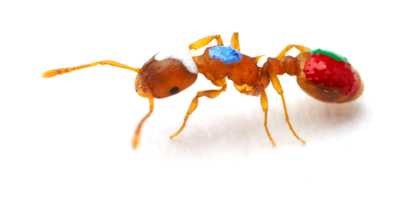 |